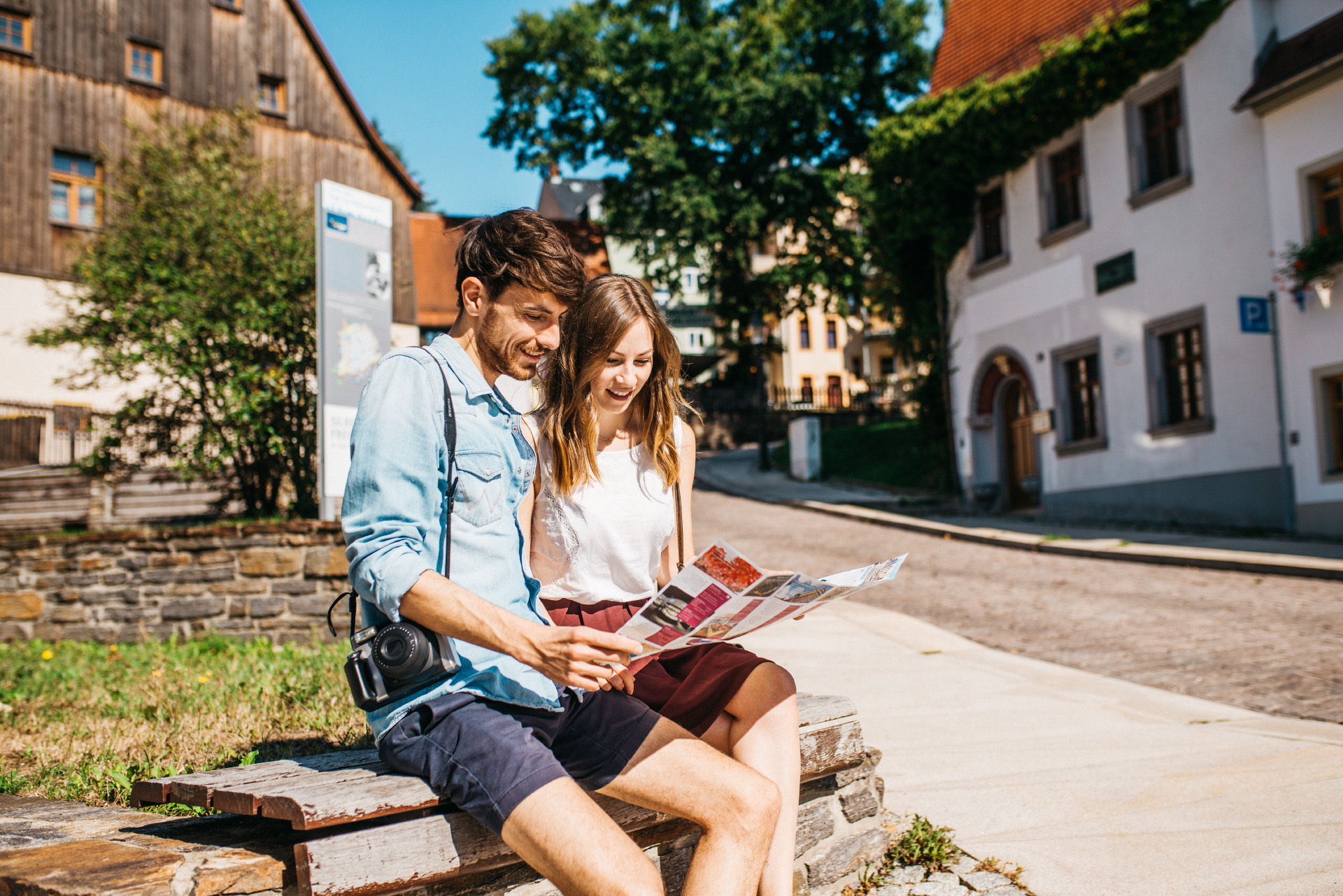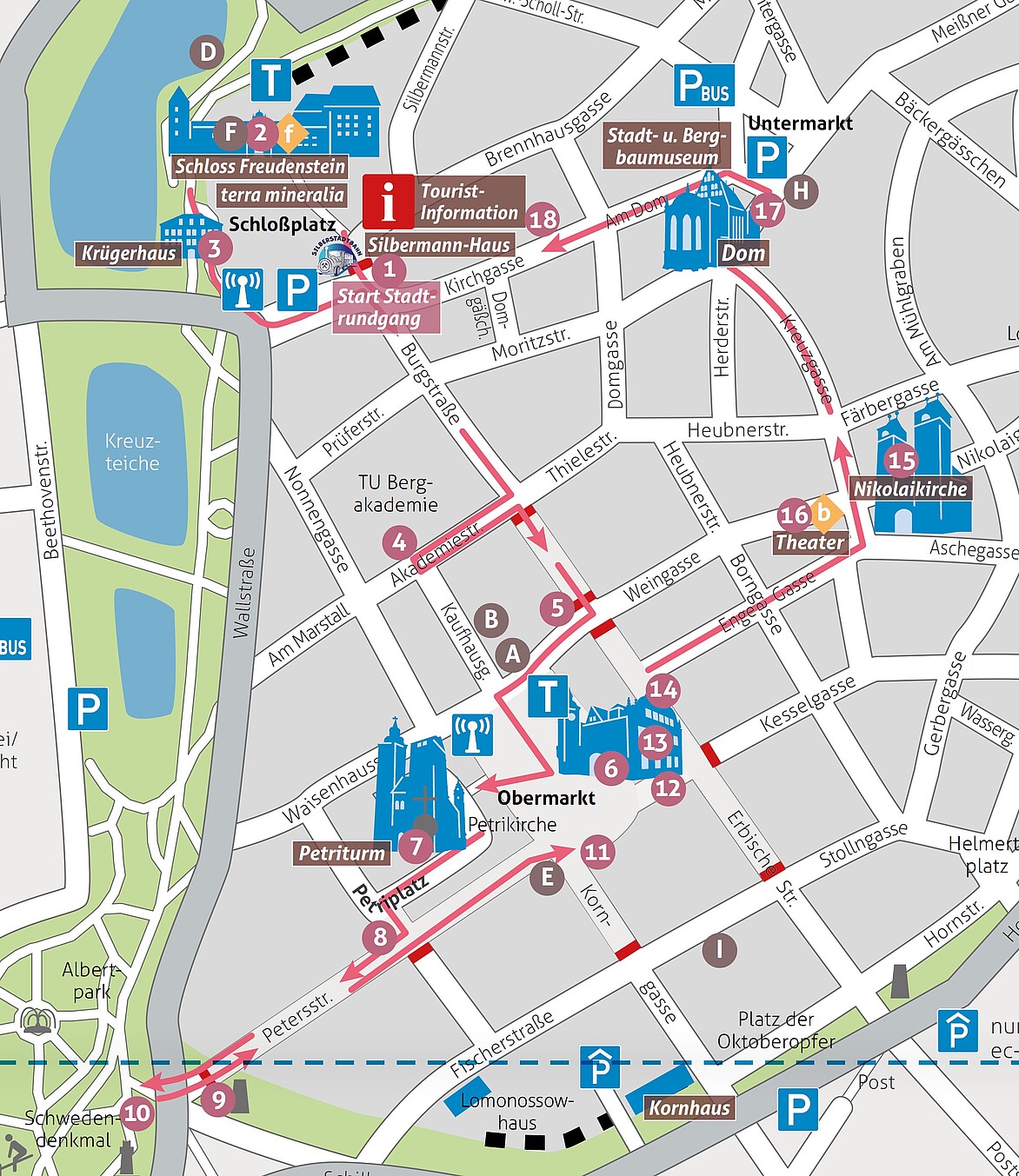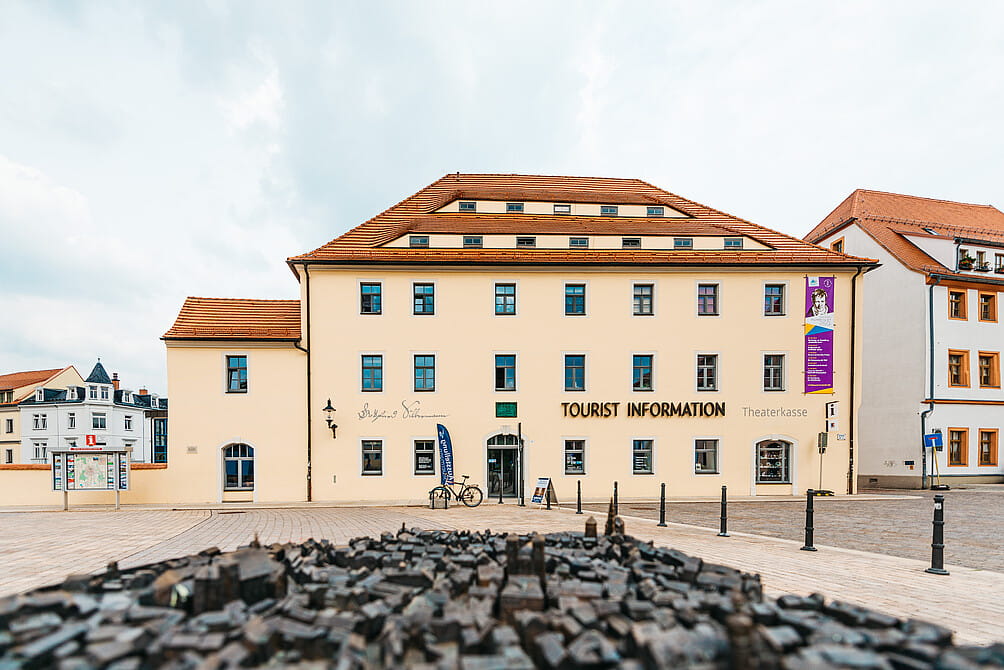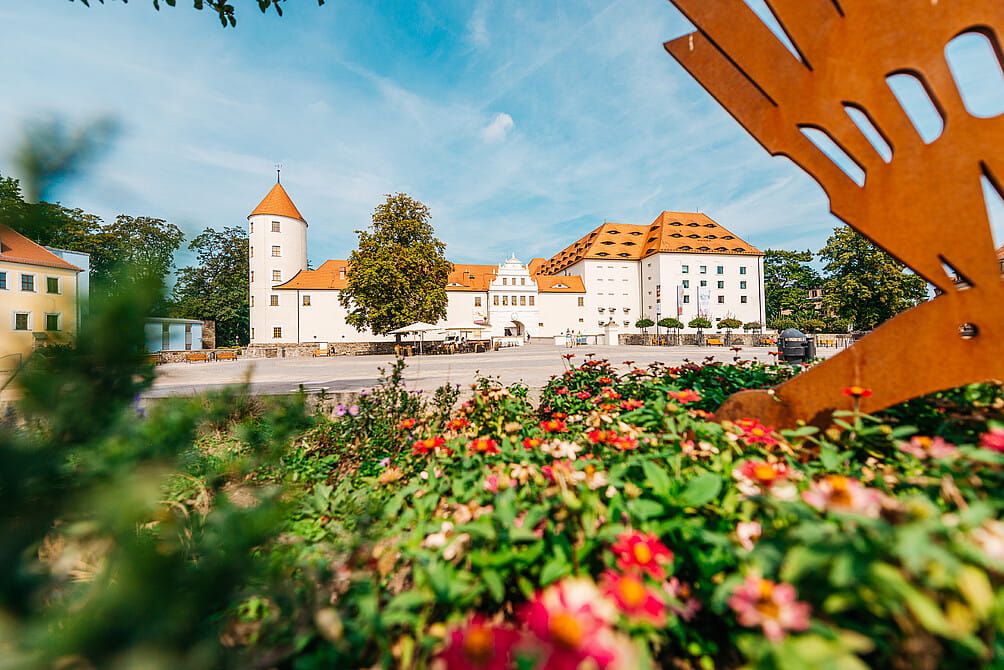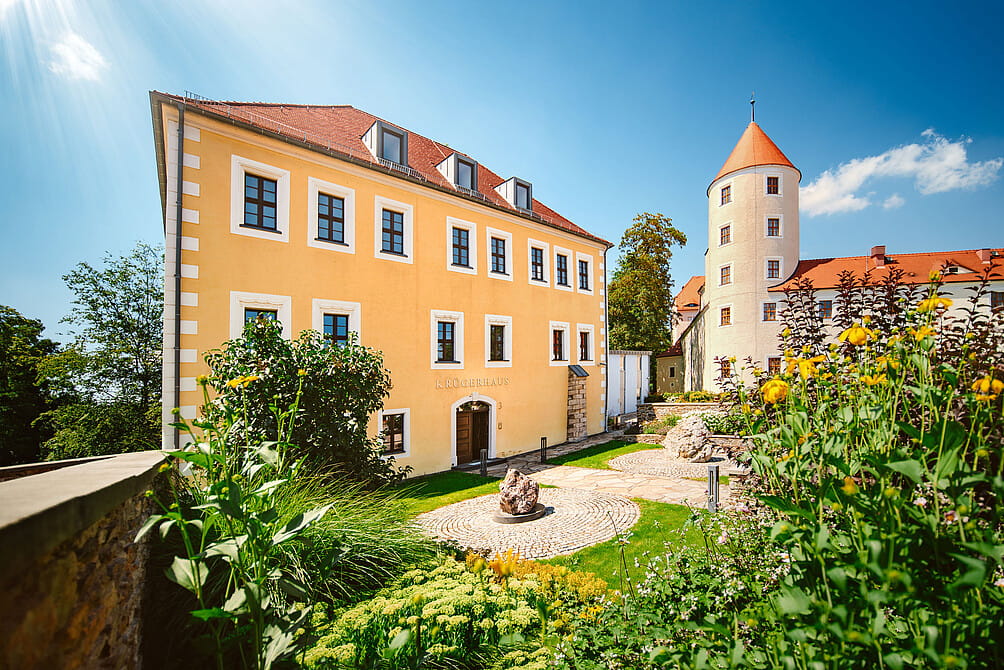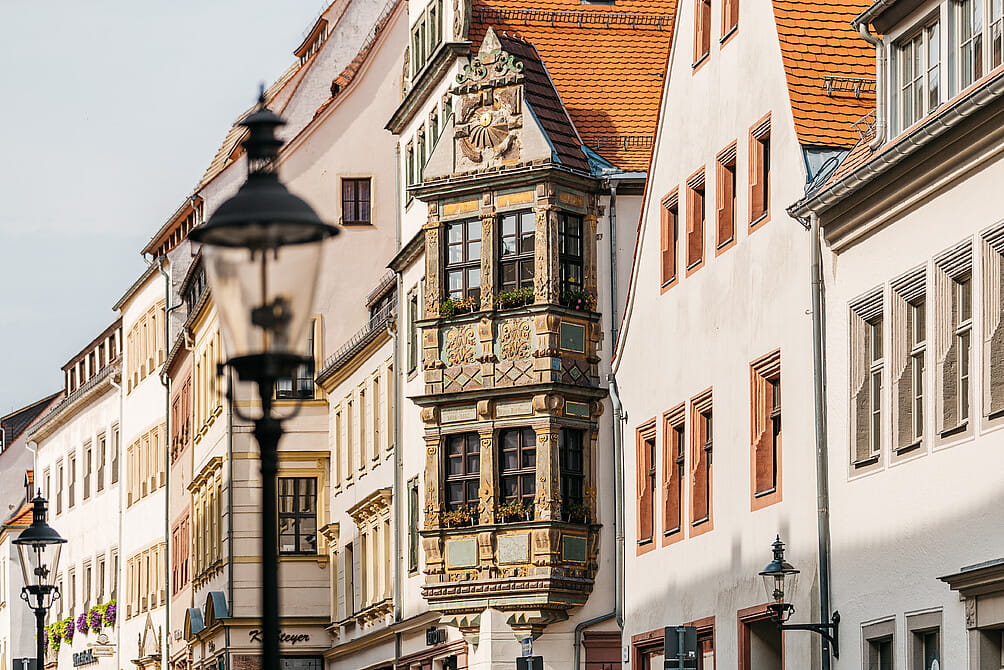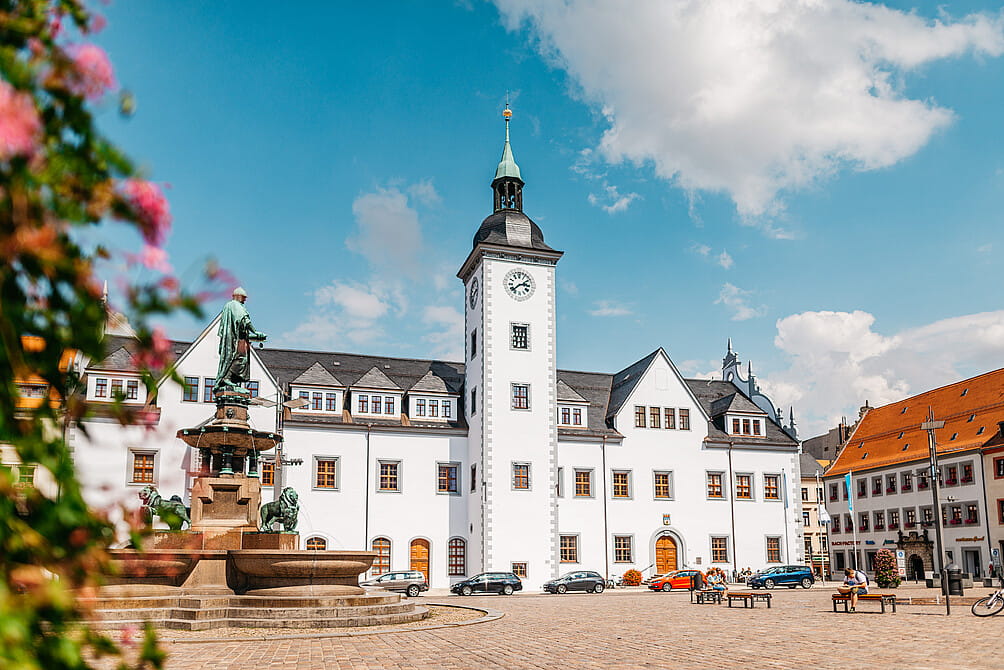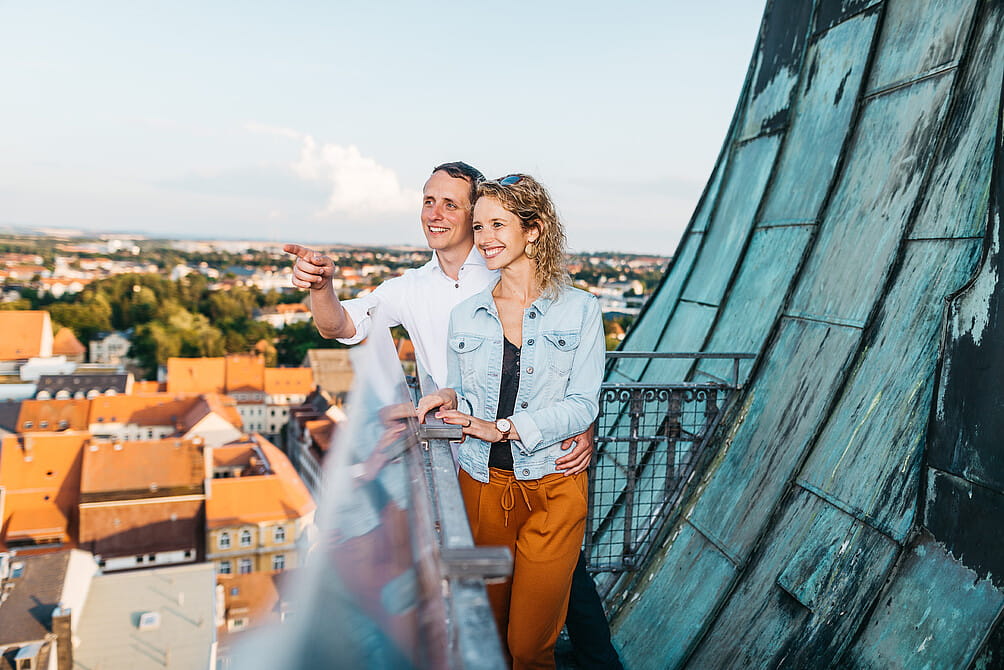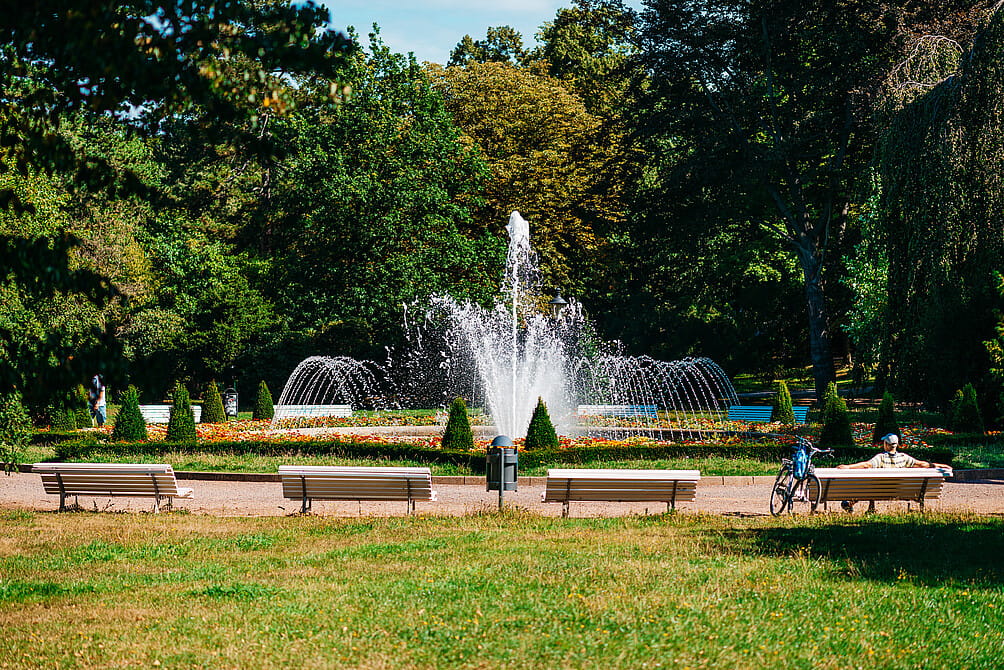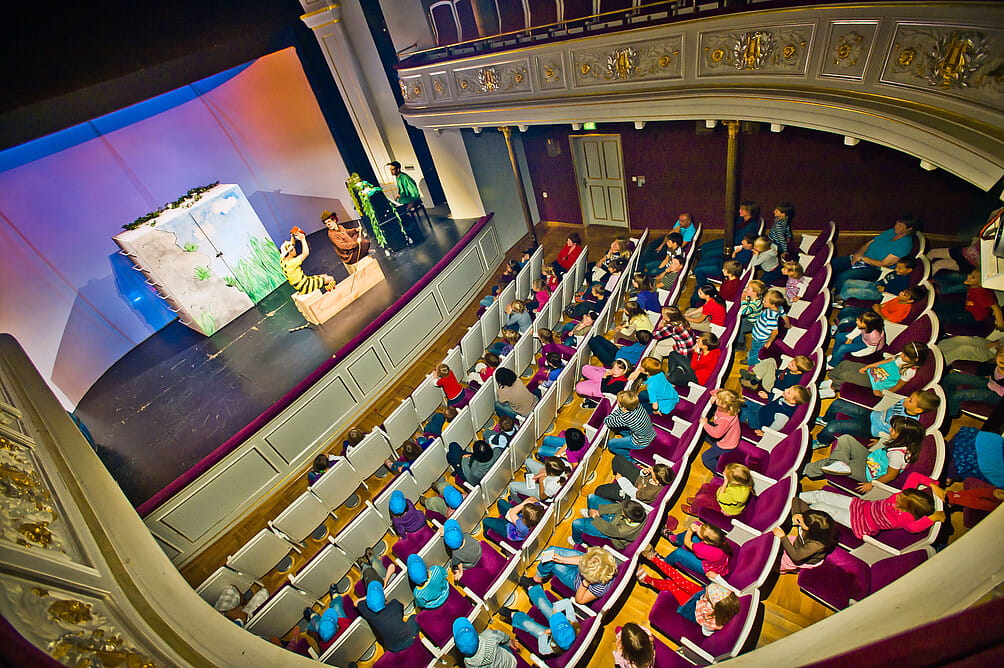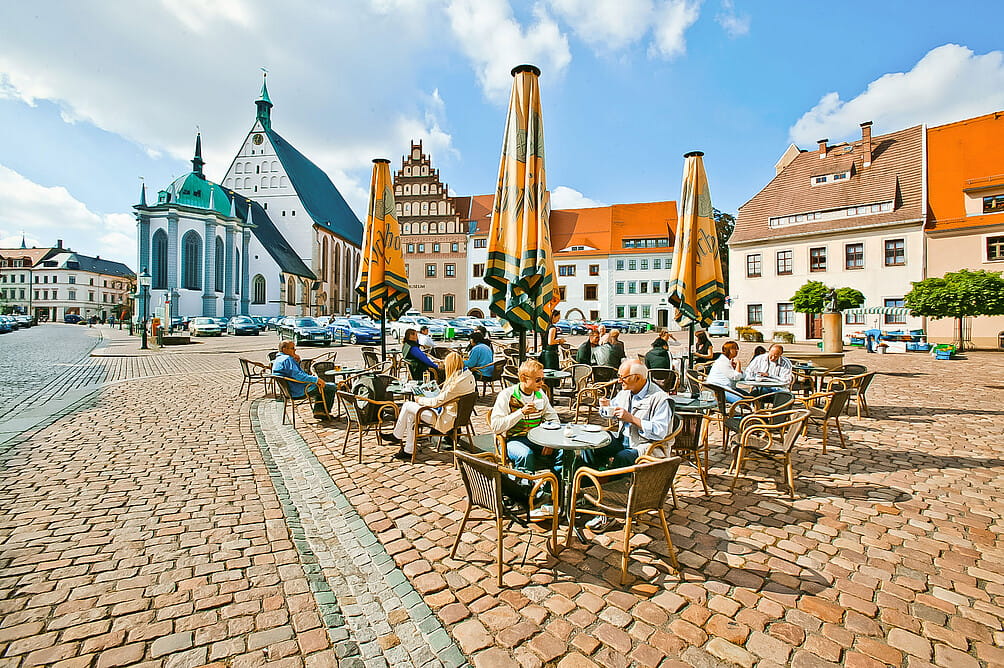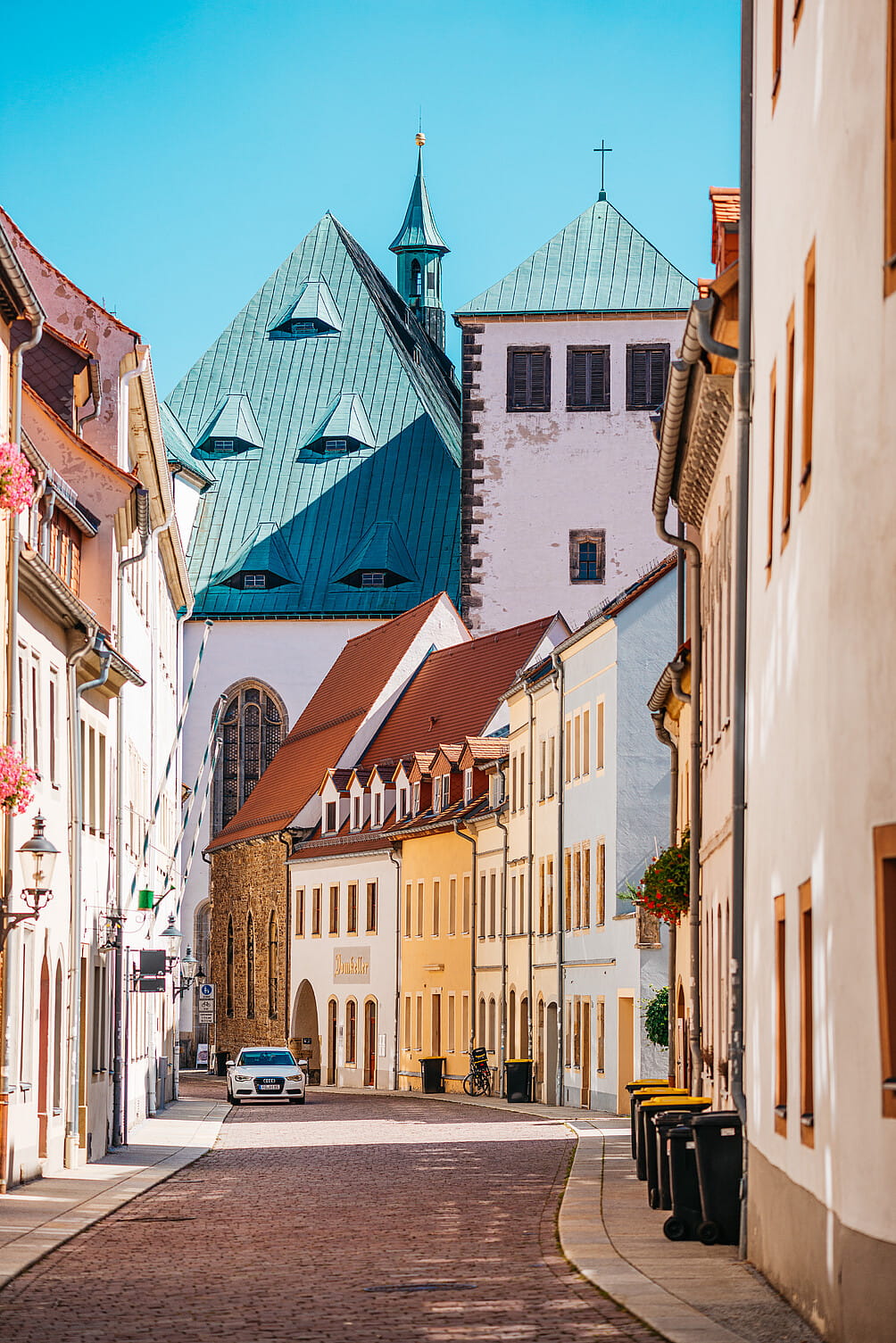Freiberg's city centre is like a walk-in museum. More than 500 monuments and an undestroyed historic city centre surrounded by parts of the city wall bear witness to the former silver wealth.
And the nice thing about it: Freiberg's city centre can be easily explored on foot. Here we present a recommended route through the city centre and the most important sights. Let yourself be enchanted by the Old Town and look out for the typically high gabled roofs and the richly decorated stone portals with mining motifs that you will encounter on your tour.
And if your feet do need a break, you can linger in one of Freiberg's Cafes.
1. Schloßplatz (Castle sqare)
Our tour begins directly on Schloßplatz (Castle square) at the "Silbermann House", which also houses the Tourist-Information and a lovingly furnished historical demonstration workshop. The famous organ builder Gottfried Silbermann lived and worked in this house
2. Freudenstein castle with the terra mineralia
The four-winged castle is closely associated with the House of Wettin. After the first silver discoveries, the town's founder, Margrave Otto of Meissen, had a castle built to protect the silver mining industry and it experienced a very eventful history. After its reconstruction, Freudenstein castle has housed the most important, but above all the most beautiful mineral show in the world since 2008 - the terra mineralia - a visit to this show is a truly unforgettable experience.
3. Krügerhaus
To the left of the castle is another mineralogical collection. While the terra mineralia offers a mineralogical journey around the world, you can find unique exhibits from Germany in the Krügerhaus.
4. TU Bergakademie
We head for the shopping & strolling mile Burgstraße, which connects Schloßplatz (Castle square) with Obermarkt (Upper Market). In Akademiestraße you will see the main building of the TU Bergakademie on the right, the oldest still existing mining science educational institution in the world.
5. Oriel
6. Upper Market (Obermarkt)
Otto the Rich", the founder of the city, is enthroned on the lion fountain in the middle of the now completed Upper Market (Obermarkt). The Steigerlied is played daily at 11.15am and 4.15pm from the tower of the town hall.
From the oriel of the town hall, the prince robber Knight Kunz von Kauffungen looks down on his place of execution. Today's "Ratskeller" (Town Hall Cellar) was built in 1545 as the town's department stores'.
7. Petri Church
The Kirchgässchen leads you to the Petri Church, which is located on the highest point of Freiberg's city centre and was built around 1200. With its 74 m, the Petri Tower is a landmark that can be seen from afar, and its ascent offers an impressive view over the Silver City and the mining slag heap area.
8. Fortuna Fountain
We leave Petriplatz and are greeted on Petersstraße by the Fortuna Fountain. A tree of life winding its way upwards symbolically houses significant and striking personalities from the history of the Silver City and the goddess of fortune holds dichotomy with a putto.
9. Postal mileage column
At the end of Petersstraße, a postal mileage column from 1723 stands out. During the reign of Augustus the Strong, postal mileage columns were erected along all important postal and trade routes. .
10. Sweden Monument / Albert Park
11. Alnpeck house
Back on Petersstraße we reach the UpperMarket (Obermarkt) again. Opposite Café Hartmann, which is known for its "Bauerhasen" (medium-heavy yeast pastry with sultanas, almonds and a secret blend of spices.), among other things, is the Alnpeck house (built around 1510) in the southern corner, whose name goes back to the last Freiberg mint-master.
12. Upper Market (Obermarkt) 1
The most striking feature of this building is the magnificent sandstone portal. The house was once the residence of the mayor Schönlebe, who is also immortalised on the miner's pulpit in the Cathedral.
13. Klatschweiberbrunnen (Gossip Fontain)
Directly opposite, the Klatschweiberbrunnen (Gossip Fountain) catches the eye. It was created by the Freiberg sculptor Gottfried Kohl. Perhaps you can hear what the ladies are saying to each other about the news in the city.
14. Miner's memorial
We walk along the back of the town hall to the Miner's Monument, which commemorates the cessation of mining in the local area in 1913.
Opposite, on the corner building to Enge Gasse, you will find the depiction of Anna Selbdritt (Saint Anne with her daughter Mary and the baby Jesus). We follow the Enge Gasse, at the end of which we can already see the towers of the St. Nicholas Church.
15. St. Nicholas Church
The Nikolai Church was built in Romanesque style at the end of the 12th century. In 1750 it was rebuilt in the Baroque style. The church was secularised in 1975 and after reconstruction it now serves as a popular concert and conference hall.
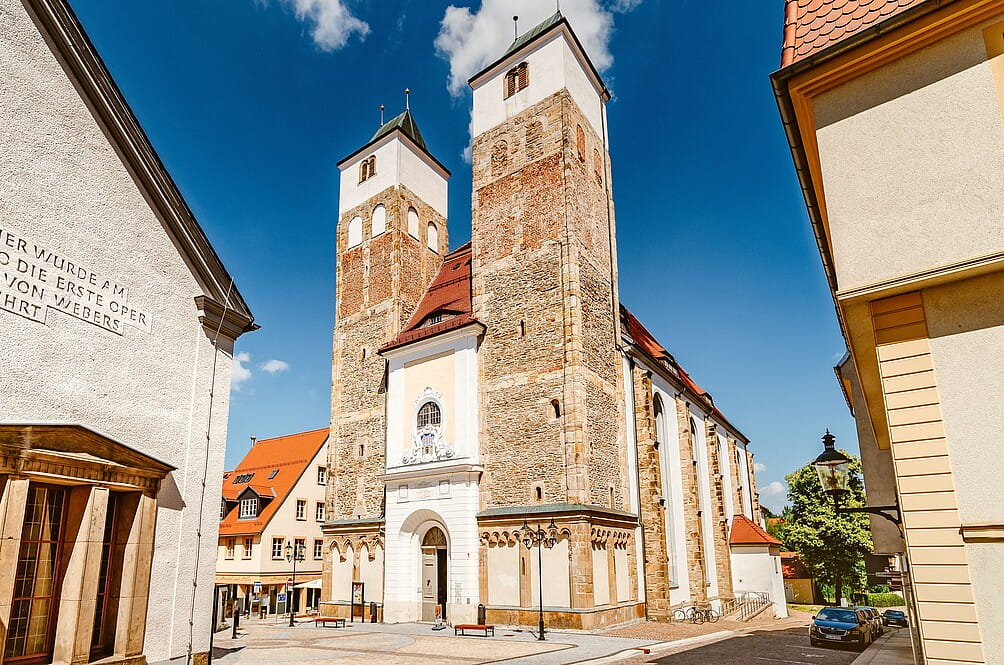
16. Theatre Freiberg
Directly opposite the Nikolaikriche is the oldest municipal theatre in the world, affectionately known as the "little Semper Opera" thanks to its interior design. The theatre was opened in 1791 and has been owned by the city since then. In the meantime, the theatre has conquered the entire block of houses and united all the trades that a theatre needs in one quarter - as you can easily see from the lettering on the front of the building.
17. Untermarkt
Along Buttergasse and Kreuzgasse the path leads us to Untermarkt. Most of the buildings date from the 16th century. Dominating, of course, St. Mary's Cathedral, famous among other things for its Romanesque Golden Gate, the tulip pulpit and the Silbermann organs. Also striking is the high Gothic building of the former Domherrenhof, now the City- & Mining Museum.
18. Kirchgasse
We leave the Untermarkt and walk between the Cathedral and the museum to Kirchgasse.
To the right we find the Oberbergamt, an authority that has watched over mining in Saxony for almost 500 years. At the end of the street, it is worth looking back into Kirchgasse with its colourful house fronts, bordered at the end by the cathedral.

